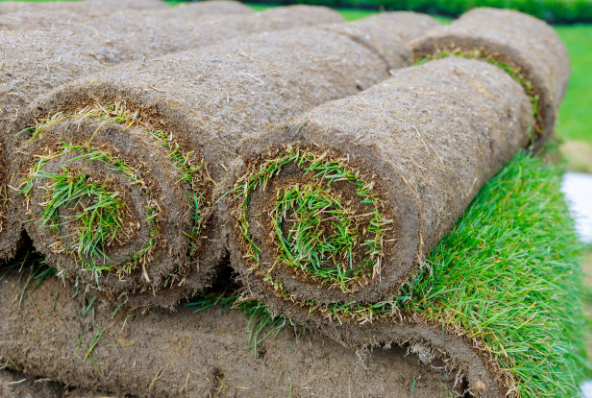The Grass is Always Greener: Your Guide to Golf Course Turfgrass
Rolls of turf waiting to be installed on a golf course.
While golf is well known as a leisurely and relaxing sport, we don’t often recognize the most important aspect. Grass! Grass, turfgrass, or whatever you prefer to call it, is not only the most important aspect of golf course maintenance but the defining factor of the course itself. The quality and health of your course's turfgrass affect the playability and enjoyability of a game, something that will make or break your course.
Establishing golf course turf and then maintaining it throughout the year is a complicated and specialized science, one which is known as turfgrass management. To avoid getting too scientific here, we’ll focus on the types of grasses, where they’re used, and what they offer the course.
Grass Species and Versatility
While there are thousands of grass species, there are about a dozen grasses that are common on the course. One course could easily have multiple grass species, as different varieties provide different playing experiences.
Grasses are separated into two categories, warm-season grasses, and cool-season grasses. While there are versatile species of grass that can survive in both warm and cold climates, they’ll be classified by the season they do best in.
WARM SEASON GRASSES
Bermuda Grass, a warm season grass.
Bahia Grass: A common and widely available species, Bahiagrass spreads rapidly and withstands droughts. While this species is a great choice for immediate groundcover or erosion control, it produces poor playing conditions and should be used in specific parts of the course.
Bermuda Grass: A nickname for the genus Cynodon, this heat-loving grass can weather droughts and water scarcity better than others on this list. At the same time, Bermuda spreads quickly and can easily become a weed if improperly managed.
St. Augustine Grass: A popular choice in more tropical regions such as its home state of Florida, St. Augustine grass is low maintenance and shade tolerant. Out of all the warm season species we discussed, St. Augustine is the only one that will thrive in the heavy shade of trees, shrubs, and buildings.
Zoysiagrass: Zoysia is a genus originating in the coastal areas of Southeast Asia. Zoysiagrass is impressively hardy, withstanding heat, drought, shade, traffic, and disease without a shrug.
COLD SEASON GRASSES
Kentucky Bluegrass, a cold season grass.
Kentucky Bluegrass: This species of the Poa genus is the most widely used turfgrass in the Northern U.S. Not only golf courses, but personal lawns enjoy using this grass for its rich color and bounce.
Bentgrass: Capable of handling intensely low mowing heights, this grass is ideal for golf course greens and tees. Bentgrass is extremely versatile and can be used in a variety of climate zones.
Tall Fescue: A popular cool-season species, Tall Fescue handles heat and drought better than any other cool-season variety. While it resembles its Ryegrass and Bluegrass cousins, its distinctive lines and the boat-shaped tip can help you tell it apart.
If your turfgrass isn’t one of your main concerns on your course, it's time to reprioritize. As the game of golf relies on the conditions of the course, all the customer service and amenities in the world can’t hide an unplayable course. Optimizing your golf course maintenance plan is something you can easily do by sitting down with a golf professional and looking line by line at your current process.
If you want an outside opinion, DTE Golf® is here to support owners and operators in the golf course industry. For a free consultation, contact DTE Golf® and speak directly with a certified golf professional, right now.



